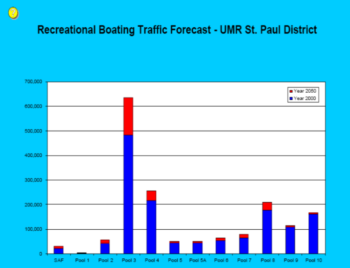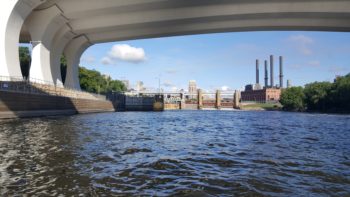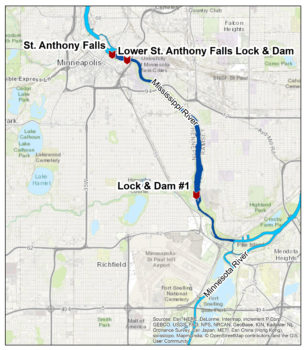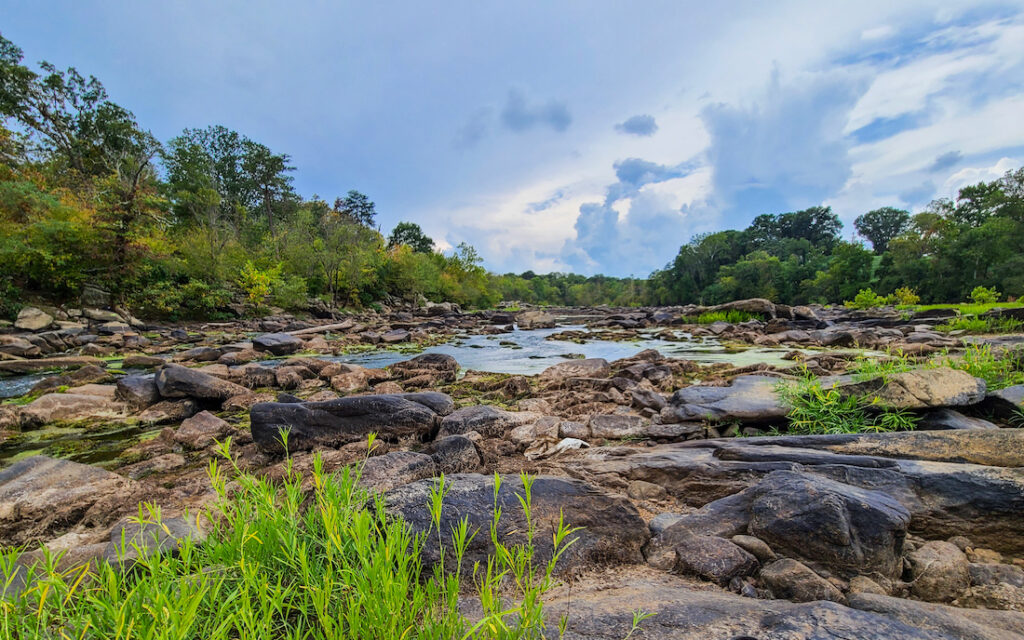Now is the Time to Restore the Mississippi River Gorge
This year, we have an unique opportunity to restore part of an untamed Mississippi River and bring back fish and wildlife exiled a century ago.
This blog is a part of our America’s Most Endangered Rivers® series on the Mississippi River Gorge.
Rivers connect us.
Not just in the wild lands of Montana or through the great canyons of the West, but they are the life force of many urban centers. This is the case with the Mississippi River Gorge… and in this case, our urban river connection could be even stronger if we remove the dams that keep it tightly harnessed.
The Mississippi River Gorge runs approximately eight miles from Saint Anthony Falls in downtown Minneapolis to the Minnesota River confluence in Mendota, Minnesota. In the Gorge, steep bluffs extend to the waterline and are mostly undeveloped throughout the Mississippi National River and Recreation Area. Parkland and walkways parallel the top of the bluffs, and some areas are crisscrossed with hiking trails. From the water, recreational boaters experience a feeling of remoteness even though they are paddling through a major metropolitan area. However, despite the river’s proximity to the city’s center and its National Park designation, it has the fewest number of recreational boaters on the Upper Mississippi River Navigation System in the St. Paul District.

Although within the most populous area of the river, Pool 1 has the least recreation with no projected growth assuming present conditions continue. (Click to enlarge.)
The Gorge is impounded by two navigation dams that also produce hydropower: Lower Saint Anthony Falls Lock and Dam, and Lock and Dam 1.
These dams are impacting a river corridor that supports many state and/or federal species of concern, including black buffalo fish, paddlefish, northern long-eared bat, eleven species of mussels and Blanding’s turtle.
This year, there is an opportunity to restore part of an untamed Mississippi River and bring back fish and wildlife exiled a century ago.
The U.S. Army Corps of Engineers is currently studying Lower Saint Anthony Falls Lock and Dam, and Lock and Dam 1, to determine if it is in the taxpayers’ best interest to continue paying for maintenance and operation of the structures. This study will also determine if other federal, state, local, non-profit and private entities are interested in future ownership of the properties. Upon completion of the study, the Army Corps will submit recommendations to Congress on the fate of the infrastructure. This study provides a rare opportunity to influence the future of the Mississippi River Gorge and residents’ connections with the river.
It costs about $1.5 million annually to operate and maintain the dams and locks in the Mississippi River Gorge. On top of this routine funding, the infrastructure must be overhauled about every 50 years to extend the life of the infrastructure. Such major rehabilitation work can cost around $45 million per site.
If the Army Corps decides to keep the dams in place, aquatic habitat in the Gorge could continue to decline for a generation or more. On the Upper Mississippi River, habitat is degrading faster than it can be restored through existing conservation programs, and the river’s dams are a primary cause of declining aquatic habitat.
Saint Anthony Falls was once one of four big river rapids on the Upper Mississippi. Today, a lone remnant of the St. Louis Chain of Rocks rapids is all that remains. While the Gorge’s bluffs have been mostly protected as public parkland, the dams remain blocking access to unique habitat for fish and wildlife and stifling natural river processes.

Lower Saint Anthony Falls Lock and Dam | Olivia Dorothy
The dams in the Mississippi River Gorge were built to support an industry vision dating back to the 1800s. Although the dams currently produce hydropower, their capacity is tens of thousands of kilowatts below the 55,000-kW national average, and their actual production is lesser still. Keeping the dams in place would require millions of dollars annually to safely maintain the infrastructure, some of which is a century old, while the river’s ecosystem continues to degrade.
The time is ripe to take a bold step forward towards a new vision of the Gorge that removes the environmentally damaging features of a 150-year-old industrial plan, restores the natural flow and character of the river, rehabilitates habitat for fish and wildlife, and promotes compatible recreation and business opportunities.
The U.S. Army Corps of Engineers should move towards a solution that removes the dams in the Mississippi National River and Recreation Area.
[su_button url=”https://act.americanrivers.org/page/4987/action/1″ background=”#ef8c2d” size=”4″ center=”yes”]Take Action »[/su_button]






1 response to “Now is the Time to Restore the Mississippi River Gorge”
Thanks for your presentation at our Breckenridge Chapter of the Izaak Walton League last month. We learned a lot from you and hope we can help in the push to free the river. I wrote up a little article we will run in our Timberlines paper about it.